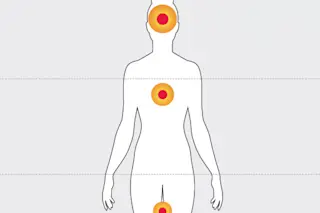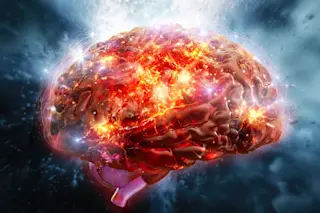So it seems the “I” spot can change depending on the context. That makes sense, given that there are lots of different things we could mean when we talk about the self, Alsmith says. It could be where our thinking is going on, or where our emotional center is. Alternatively, it could be the point from which we initiate action or even our body’s center of gravity.
“What we worried about with some of the literature is that it is very easy to narrow people down to giving one answer that is the correct answer,” says Alsmith. “It might be that there is more ambiguity.”
I can relate to this. Even though my go-to answer would generally be the bridge of the Starship Emma, there are times when my self seems to wander. This has happened more often as I’ve grown older. In my 20s, I remember saying that, apart ...















